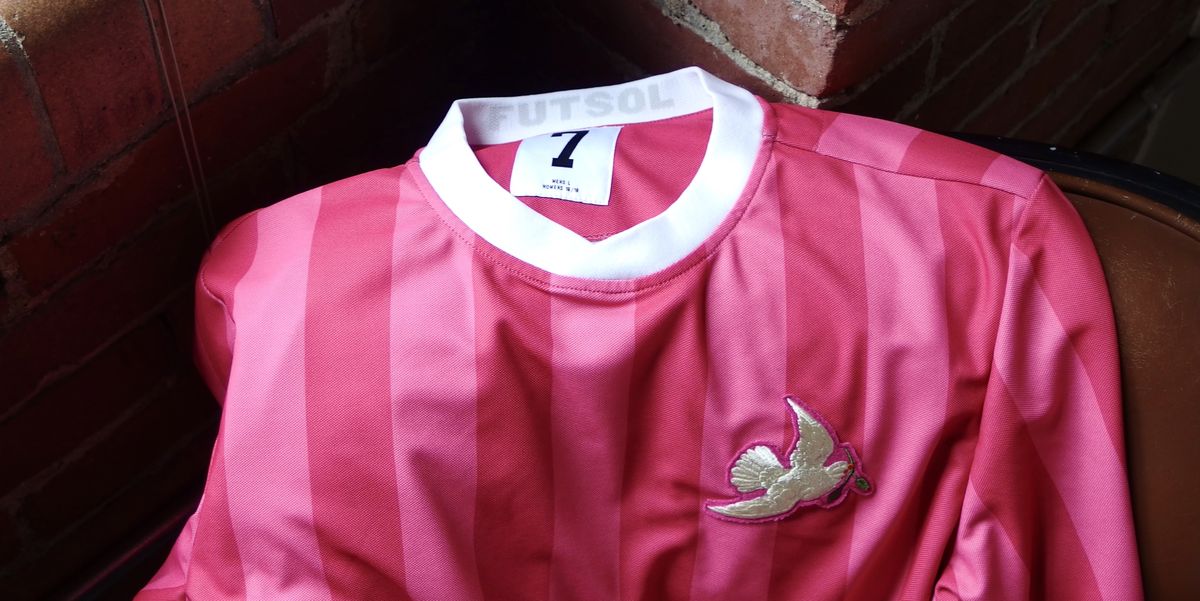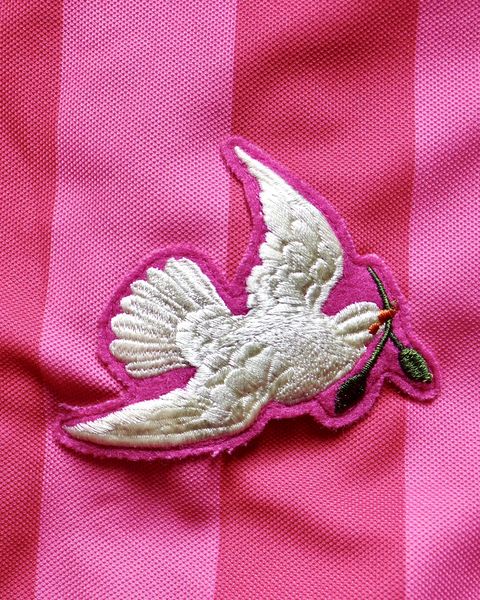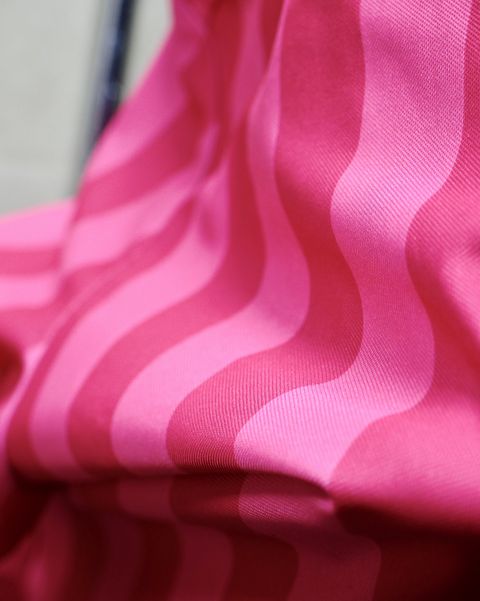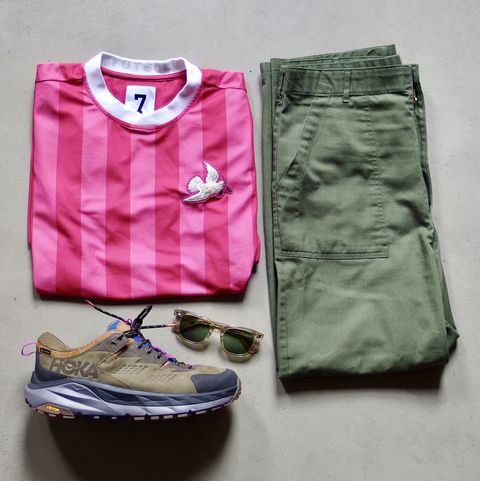Football is the most popular sport in the world. According to FIFA, there are more than 5 billion fans worldwide, a staggering estimate that dwarfs even American football. If true, this number would mean that there are more football fans on this planet than non-football fans. (5 billion vs. 2.9 billion, respectively.)
It’s hard to underestimate the reach of the sport. At this point, unlike baseball, it’s absolutely permanent. It’s also more influential; Football stars are otherworldly influences, capable of changing the fashion sense of an entire generation overnight. And while, of course, the outfits players wear off the pitch command the most attention, football shirts are a popular source of inspiration for fashion designers. They appear, season after season, remixed and reinvented, covered in branded patterns and clever designs.
However, these designer interpretations are rarely subtle. They take the jerseys as is, with logos here and there and plenty of space for advertisers, and replace them instead of removing them. Fustol, on the other hand, a new brand from Nicolas Willson, a former content manager, and Luke Scheybeler, co-founder of high-end cycling brand Rapha and Ivy-inspired running brand Tracksmith, simplifies the style. Through their lens, the football jersey is more refined, arguably even stylish.
For the most part, however, they stay true to the aesthetic. Futsol’s jerseys are made in Portugal from 180gsm pique fabric woven from recycled plastic bottles sourced from Spain a few hours away. Each of the embroidered appliqué logos, called Futsol Crests, are handcrafted in the UK. That means the shirts don’t represent the teams per se, but rather classic European culture, says Willson.
The 01 collection is limited to 400 jerseys in total – 100 of each of the four designs. There’s Aceituna Blanca, a white pinstripe shirt with an olive branch crest; Paloma Roja, a pink striped shirt adorned with a dove; Naranja Verde, a green shirt with an orange embroidered on it; and Sol Azul, the closest to a traditional football shirt, with its crest acting as an advertisement for the brand itself.
It might seem like the opposite, but the best thing about Futsol jerseys is that they wear like normal t-shirts. Some jerseys have uncomfortably thin torsos or tight armholes, maybe even a deep V-neck. None of these elements are present on Futsol’s pieces, which still look like football shirts, but prove to be easier to wear on several occasions.
“Vintage jerseys have exploded in popularity and obscure kits from distant teams. I loved the idea of making the football jersey a high-end item and wardrobe staple – just like the baseball cap , the polo shirt or the tennis shoe,” says Willson. “Something that can be worn to play football but also at the bar, on vacation at the beach, tucked into linen trousers in the evening, or even with a blazer over it… We see the football shirt as a canvas of expression, for collaboration and artistic creation.”
Jerseys are true to size, but sizes XS-XL have been numbered: 4 (XS), 5 (S), 6 (M), 7 (L) and 8 (XL).
This content is created and maintained by a third party, and uploaded to this page to help users provide their email addresses. You may be able to find more information about this and similar content on piano.io




